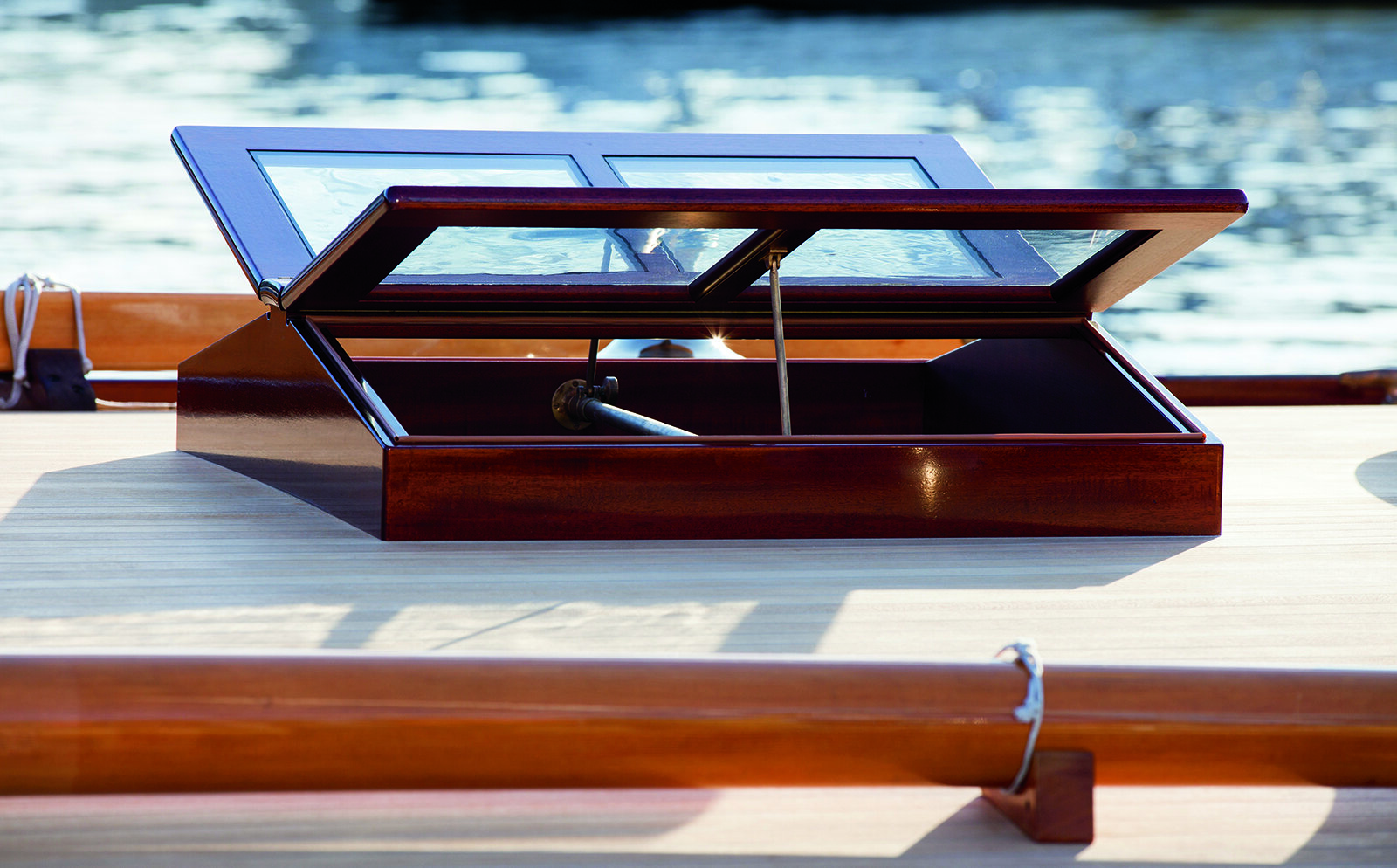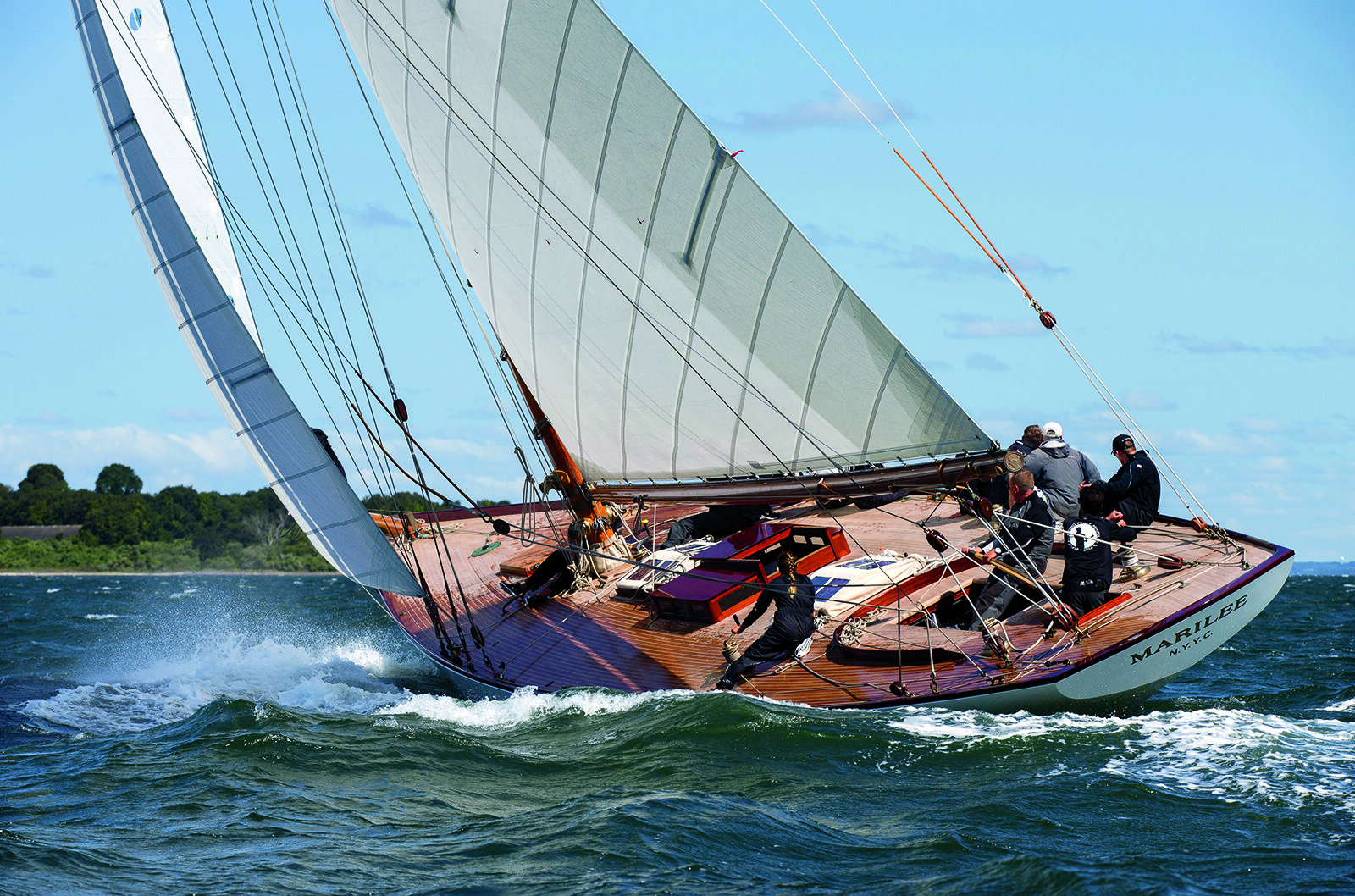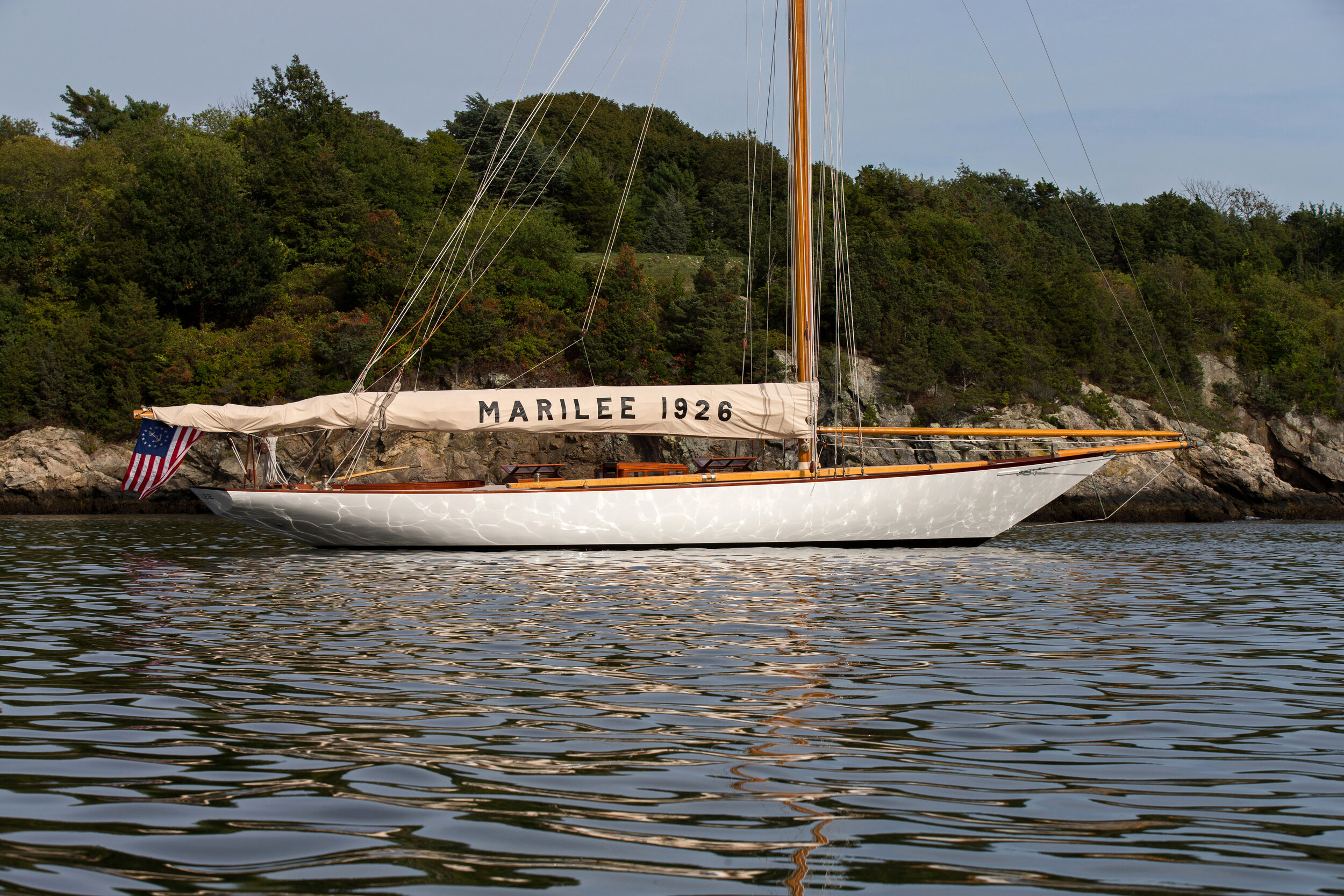MARILEE
HERRESHOFF NY40 MARILEE
HISTORY
In 1915, the New York Yacht Club commissioned a new one-design class, the NY40. Nathanael Herreshoff’s objective was to design a competitive racer that was seaworthy for ocean racing, as well as comfortable, for providing accommodations for coastal cruising. The NYYC rules committee required that the owners helm the yacht, except when the boat was on a run or a reach. Professional crews would be limited to four, with an additional two allowed when needed for racing. The rest of the crew would be comprised of so-called “Corinthian” sailors.
Twelve of the NY40 Class were launched in 1916 and the new design initially came under criticism for its wide beam and high freeboard – a major design shift from Herreshoff’s earlier class racers. “Flying Saucer” became its moniker of the day, but it was not long before the boat’s performance was proven on the racecourse and the “flying saucers” soon became known as the “Fighting Forties.”
The first twelve NY40s only saw two racing seasons before the country was engaged in the Great War. It would not be until 1920 that racing would resume. In 1926, two new NY40s were launched – MARILEE (Hull #955) for Edward I. Cudahy, a Midwest publisher who summered in Marion, Massachusetts and her sister ship, RUGOSA II (Hull #983), built for Russell Grinnell of Exeter, Rhode Island. Identical in their lines, MARILEE featured a newly designed coach house, accommodation plan, and a larger cockpit. Although the war had ended, the country had not fully recovered economically. Despite these tough times, MARILEE did participate in the 1926 race season. The trend in yachting continued to favor even smaller boats and by 1927, most of the NYYC’s NY40 Class fleet had been sold.
MARILEE is one of only four remaining examples of the New York Yacht Club 40 class, all of which are racing actively today. The other three NY40s are ROWDY, TYPHOON (ex-MAISIE) and RUGOSA.
INTERIOR
MARILEE’s owner had the bold vision to create an interior that reflected the yacht’s century-long provenance while creating an open space below. Having seen hundreds of classic yachts around the world, he realized that many interiors were dominated by darkness in all things from varnish to seat cushions.
These ‘cigar room’ interiors often simply don’t translate in a modern era, where people value a more relaxed style of comfort. It became clear from comparing plans that ever since the inception of the class, the interior space has been personal to each owner. In fact, Herreshoff designed many different layouts to accommodate the widely varied preferences of each NY40 owner. With this in mind, MARILEE’s restoration team set out to create a fresh, innovative space. The team worked with Paul Waring of Stephens Waring Yacht Design to create a traditional and properly constructed interior with an updated layout for modern day use.
RESTORATION FEATURES
When looking through all of the original drawings at MIT’s Hart Nautical Collections, director Kurt Hasselbalch discovered more #955 plans for MARILEE than he had previously known existed. In particular, he uncovered a drawing of a Marconi rig, originally designed for MARILEE’s 1933 refit. To find a Herreshoff-penned design of a modern rig was an incredible discovery. It was decided that it would be possible to sail MARILEE with two different rigs.
Armed with the original Herreshoff drawings, the team set out to design a Bermudan rig that would be as fast and competitive as her current setup, maybe even faster. It also gave the owner options, such as a larger sail inventory and the advantages of flexible race ratings. A unique custom fabrication was designed to support the loads at the bow that were expected with a Bermudan rig.
Blindly notched into the underside of her bowsprit is a split bronze tang, ready to accept the new headstay and tack fitting. This tang is directly attached to a giant bronze framework that was carved into the stem head, with multiple bolts connecting the deck structure to this new stem fitting. In less than an hour, the bowsprit can be removed and the rigging adjusted to accept the headstay loads of a Bermudan rig. At the transom, a similarly hidden provision was installed to accept a fixed backstay attachment. The new mast was also designed to plug directly into the existing chainplate locations. The mast step and partners were elongated with specific moulds designed to fit either gaff or Marconi mast. Internal halyards were used, and all mast wall penetrations were reinforced with Epoxy G-10 Tube. A square boom section accommodates a loose-footed mainsail. “MARILEE’s mast, hollow in section, was constructed of eight staves – three pieces on the front, three on the back, and two expanded side pieces provide a stiffer fore and aft section shape,” explains French. “Skillfully sculpted, these hollow spars appear like one piece of evenly toned wood where even the glue joints look like a grain line.”















